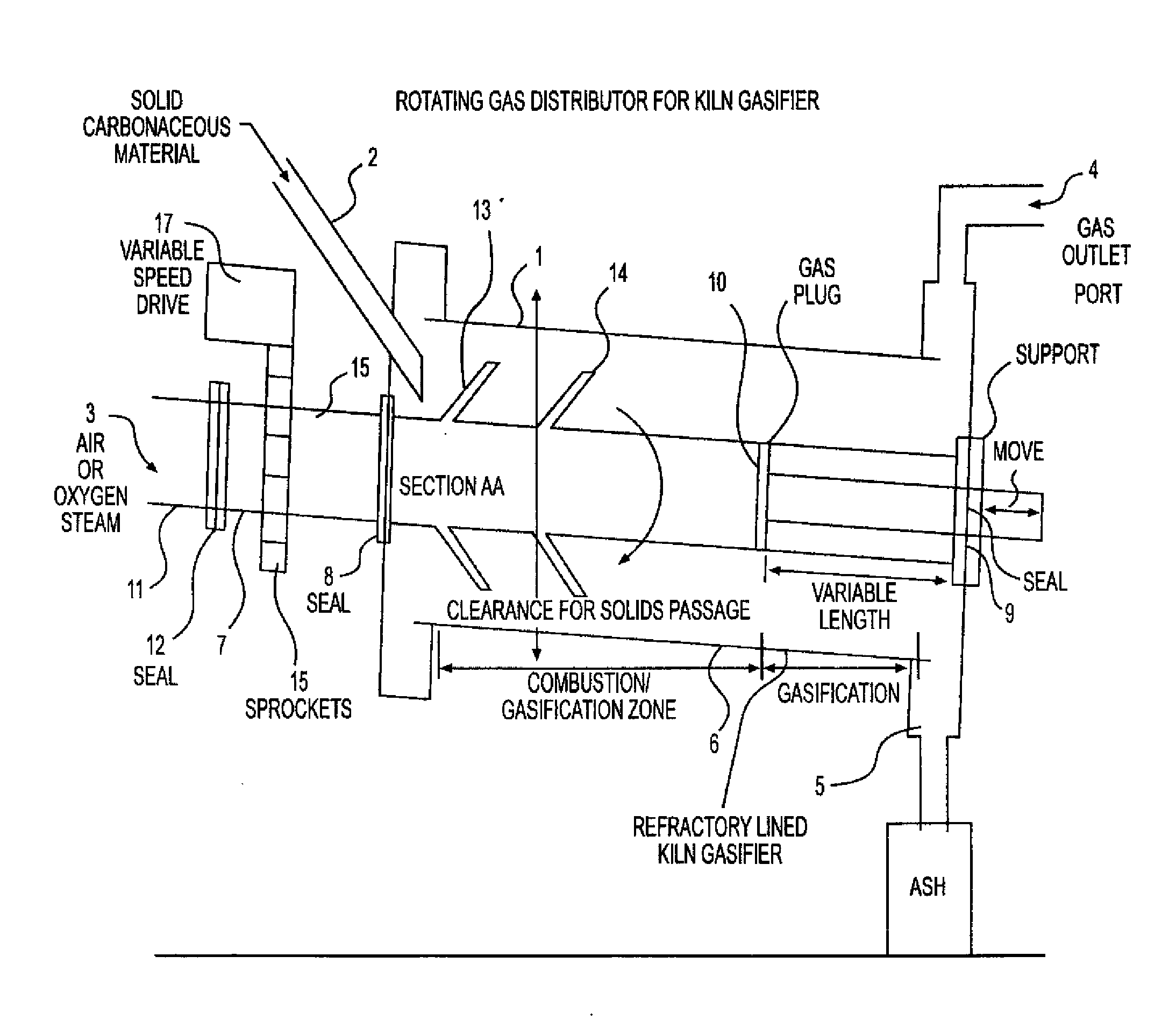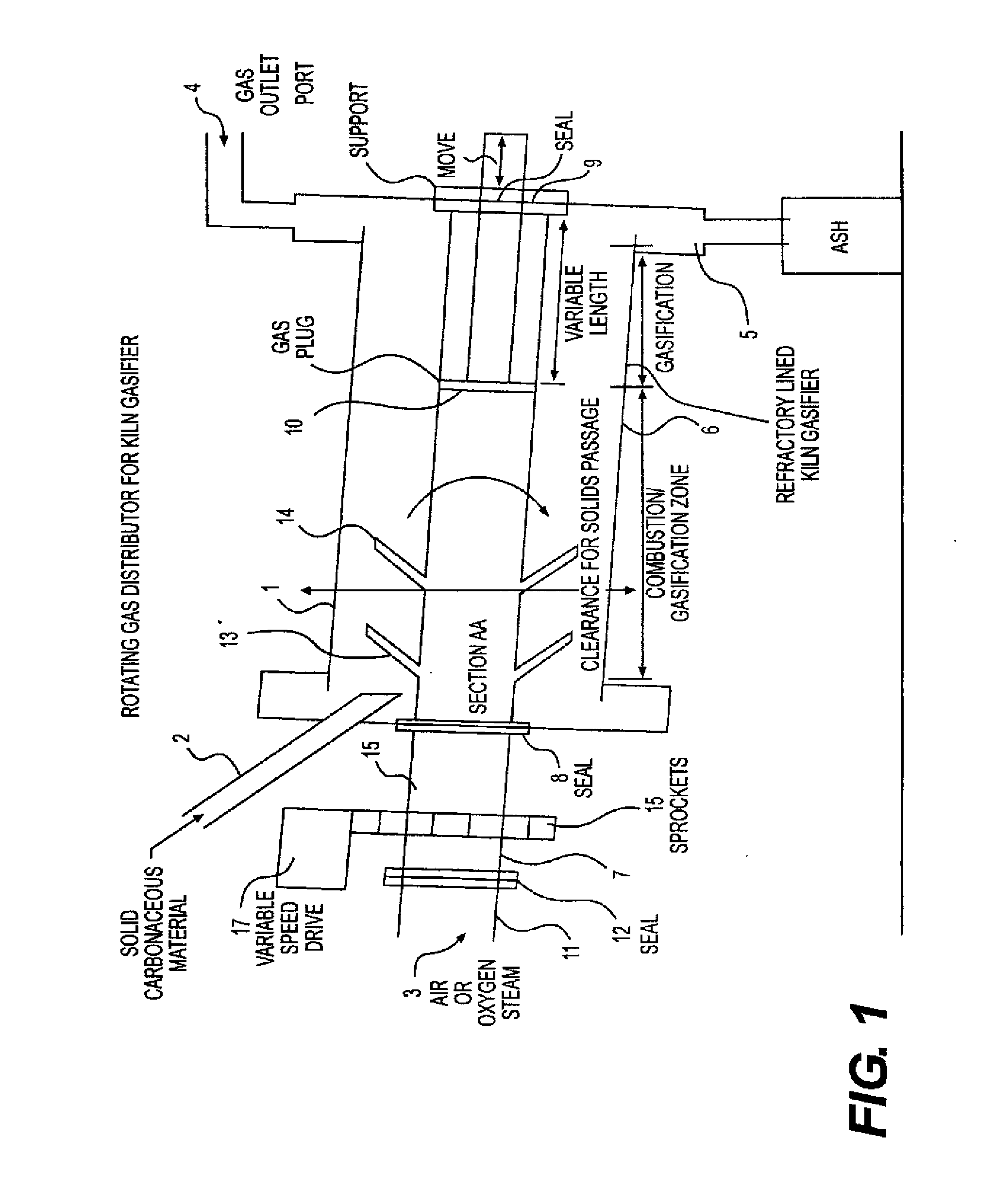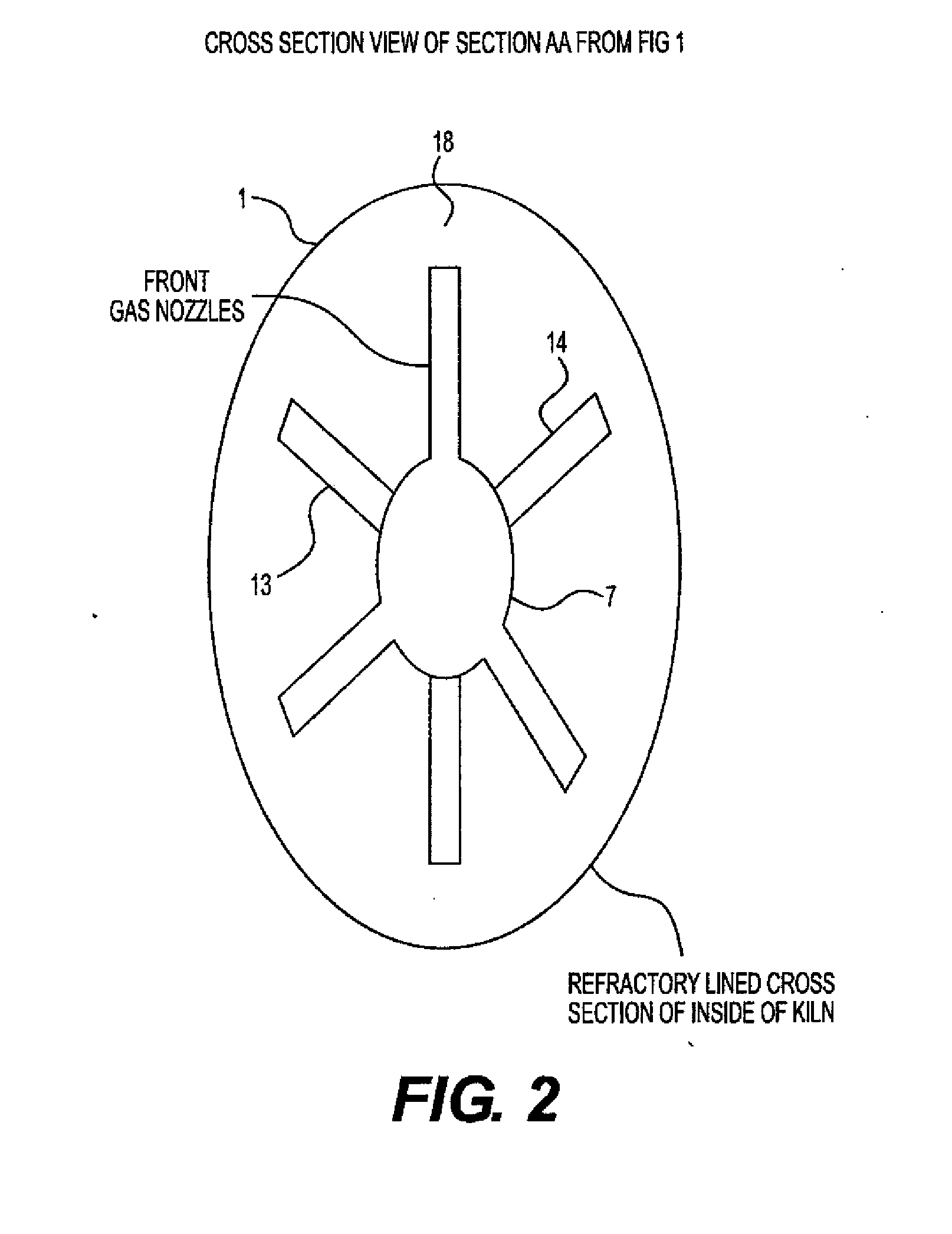Gas distributor for a rotary kiln
a technology of rotary kiln and gas distributor, which is applied in the direction of machines/engines, branching pipes, pipes, etc., can solve the problems of smoke and discharge of unwarranted polluting compounds, and fire hazards, so as to reduce the effect of pressure drop and direct impingement of gas jets
- Summary
- Abstract
- Description
- Claims
- Application Information
AI Technical Summary
Benefits of technology
Problems solved by technology
Method used
Image
Examples
Embodiment Construction
[0027]FIG. 1 depicts one of many types of rotary kiln apparatus with which the present invention can be practiced. Referring to FIG. 1, the rotary kiln gasifier 1 is a hollow refractory lined vessel with suitable inlets for feeding carbonaceous material 2, suitable inlet for feeding reactant gases such as air and steam 3, suitable outlet for fuel gas 4, and suitable outlet for ash 5. The rotary kiln depicted in FIG. 1 can also operate as combustor with equal effectiveness. The gasifier 1 should be large enough to gasify desired capacity of carbonaceous material and to provide adequate residence time for the gasification reactions between carbonaceous materials and the gaseous reactants. The interior of the gasifier 1 is preferably refractory lined 6 or alternatively surrounded by heat transfer devices such as tubes containing flowing liquids to absorb heat. The refractory lined kiln is preferred because the hot refractory retains heat and transfers that heat to the carbonaceous mate...
PUM
| Property | Measurement | Unit |
|---|---|---|
| angle | aaaaa | aaaaa |
| angle | aaaaa | aaaaa |
| angle | aaaaa | aaaaa |
Abstract
Description
Claims
Application Information
 Login to View More
Login to View More - R&D
- Intellectual Property
- Life Sciences
- Materials
- Tech Scout
- Unparalleled Data Quality
- Higher Quality Content
- 60% Fewer Hallucinations
Browse by: Latest US Patents, China's latest patents, Technical Efficacy Thesaurus, Application Domain, Technology Topic, Popular Technical Reports.
© 2025 PatSnap. All rights reserved.Legal|Privacy policy|Modern Slavery Act Transparency Statement|Sitemap|About US| Contact US: help@patsnap.com



